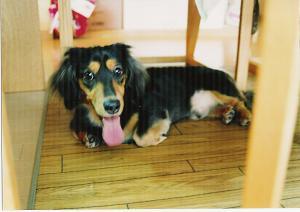
As you well know,
Nihon means Japan, and
hashi (converted to
bashi when some words added to the head) means bridge.
As it's name suggests, Nihonbashi is a representative bridge of Japan .
400 years ago,
Tokugawa Ieyasu, 1st Shogun of Edo government, built the Nihonbashi, and he set it as a basing point of Japanese 5 main roads ( Tokaido, Nakasendo, Koshu-kaido, Nikko-kaido, Oushu-kaido ). Even now, this is the base point of the national roads. You'll can find the "Zero Milestone of Japanese Road" at foot of the bridge.


King of bridges and Lord of road (
it shall reign forever... Don't you like Handel?).
It was made of wood in Edo era (
Nihonbashi drawn by Ando Hiroshige), then reconstructed with stone blocks in 1911.
Edokko (Tokyonese) were proud of this beautiful bridge.


HOWEVER, you will be shocked if you visit there now.
Ugly raised highway run over the bridge. It's one of the saddest sight I've ever seen.

In early 1960's, the period of spectacular economic growth, some politician did it. And public welcomed it as a symbol of new era.

Some culturati, economic men, people from academia have raised their voices, and now, the council of advisors to the prime minister has been discussing that how can we remove the highway from this historically important monument. They are urging to remove it away from Nihonbashi within 10 years. I'm really looking forward to seeing the bridge under the sky.

This name plate (says "Nihonbashi") was written by Tokugawa Yoshinobu, the last Shogun of Edo government.
Labels: architecture, Nihonbashi area




























